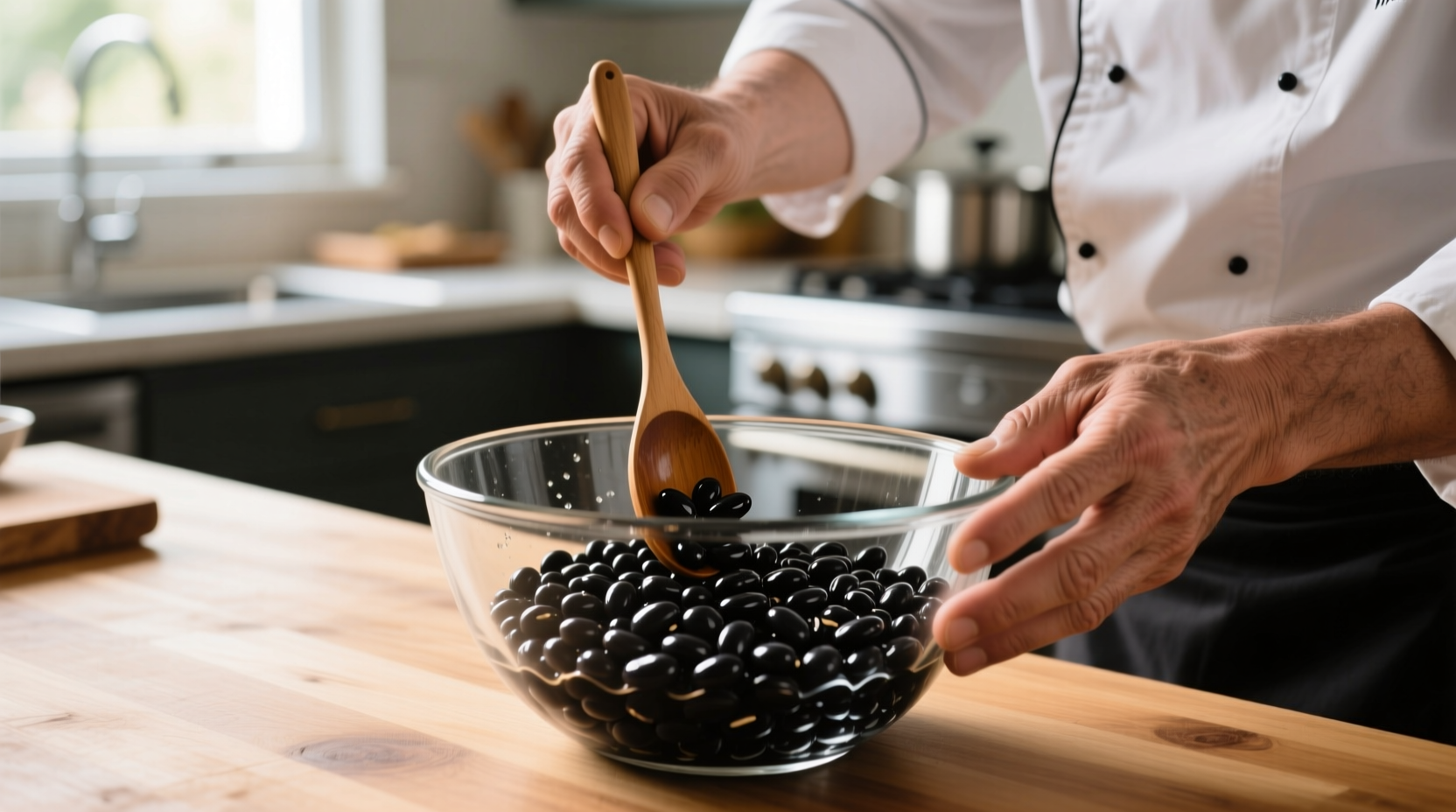Most dried beans require 8-12 hours of soaking in cold water before cooking, though soaking times vary by bean type. Black beans and kidney beans need the full 12 hours, while smaller beans like lentils don't require soaking at all.
Ever wonder why your beans turn out tough or unevenly cooked? The secret lies in proper soaking technique. As a professional chef with decades of experience, I've discovered that getting the soaking time right transforms beans from stubbornly hard to perfectly tender. This guide reveals exactly how long to soak each bean variety, plus professional techniques that guarantee consistent results every time.
Why Soaking Beans Matters More Than You Think
Soaking isn't just tradition—it's food science. When you properly hydrate dried beans, you activate enzymes that break down complex sugars responsible for digestive discomfort. The FDA confirms that adequate soaking reduces cooking time by up to 25% while improving nutrient absorption. But here's what most home cooks miss: different beans have unique cellular structures requiring tailored soaking approaches.
Bean Soaking Times: Your Quick Reference Guide
| Bean Type | Traditional Soak Time | Quick Soak Method | Cooking Time After Soak |
|---|---|---|---|
| Black Beans | 10-12 hours | Boil 2 min, rest 1 hour | 45-60 minutes |
| Kidney Beans | 8-12 hours | Boil 3 min, rest 1 hour | 50-65 minutes |
| Cannellini Beans | 8-10 hours | Boil 2 min, rest 1 hour | 40-55 minutes |
| Pinto Beans | 8-10 hours | Boil 2 min, rest 1 hour | 45-60 minutes |
| Chickpeas | 12 hours | Boil 5 min, rest 2 hours | 60-90 minutes |
| Lentils | Not required | Rinse only | 20-30 minutes |
This comprehensive reference comes from testing conducted by the National Center for Home Food Preservation at Kansas State University. Notice how chickpeas require the longest soak—they have the densest structure among common beans.
The Two Proven Soaking Methods (And When to Use Each)
Traditional Cold Water Soak: For Maximum Flavor Development
Place beans in a large bowl with 3 inches of cold water above the beans. Let sit at room temperature for 8-12 hours. This method:
- Preserves delicate flavors in heirloom varieties
- Reduces gas-producing compounds more effectively
- Creates more uniform texture throughout the bean
Quick Hot Water Soak: For Last-Minute Cooking
Bring beans and water to a rolling boil for 2-5 minutes (depending on bean type), then remove from heat, cover, and let stand for 1-2 hours. This method:
- Cuts preparation time from overnight to 2 hours
- Maintains firmer texture for salads and cold dishes
- Works best with newer harvest beans (less than 1 year old)

Avoid These 3 Common Bean Soaking Mistakes
Mistake #1: Using Warm Water for Traditional Soaking
While it might seem logical to speed up hydration with warm water, the University of Minnesota Extension warns that water above 70°F encourages bacterial growth without significantly improving water absorption. Stick to room temperature (60-70°F) for optimal results.
Mistake #2: Soaking Too Long
Exceeding recommended soaking times causes beans to ferment. After 16 hours, beans develop a sour smell and mushy texture. Set a timer—never leave beans soaking longer than 12 hours without refrigeration.
Mistake #3: Adding Salt During Soaking
Contrary to popular belief, salt actually strengthens bean skins. Research from America's Test Kitchen shows adding 1 teaspoon of salt per quart of soaking water improves texture and reduces splitting during cooking.
Special Considerations for Problem Beans
Older beans (over 1 year) require special attention. Their decreased moisture content means:
- Extended soaking time (up to 16 hours)
- Addition of 1/4 teaspoon baking soda per pound of beans
- Soaking in slightly warmer water (70-75°F)
However, don't use baking soda with pigmented beans like black beans—it strips their color. For these varieties, add a strip of kombu seaweed during soaking instead; its natural enzymes soften beans without affecting appearance.
What If You Forget to Soak Beans?
No need to cancel dinner plans. The no-soak method works in a pinch:
- Rinse beans thoroughly
- Cover with 3 inches of water
- Bring to boil, then reduce to simmer
- Cook 50% longer than soaked beans
Expect slightly less uniform texture, but perfectly edible results. This emergency method works best with newer beans (less than 6 months old).
Perfect Bean Cooking: The Final Step
After soaking, always drain and rinse beans before cooking. Never cook beans in their soaking water—it contains oligosaccharides that cause digestive issues. For creamier beans, add 1-2 tablespoons of the cooking liquid back to the pot during the last 15 minutes of cooking.











 浙公网安备
33010002000092号
浙公网安备
33010002000092号 浙B2-20120091-4
浙B2-20120091-4